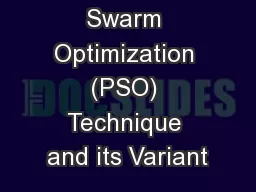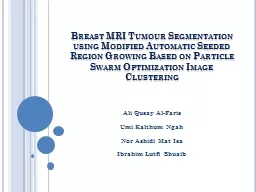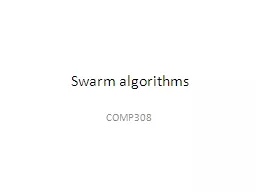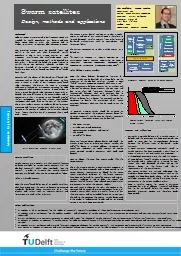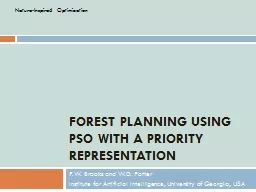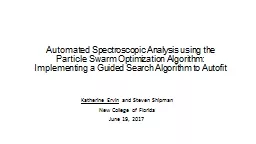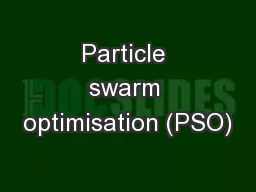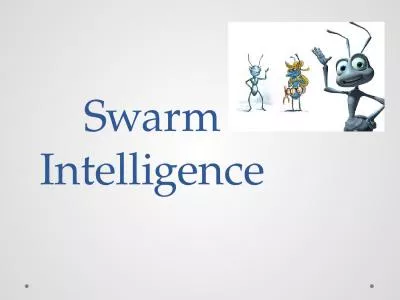PPT-Particle Swarm Optimization (PSO) Technique and its Variant
Author : sherrill-nordquist | Published Date : 2017-11-05
Presented by Samia Abid Student MSCS Supervised by Dr Nadeem Javaid Associate Professor Department of Computer Science COMSATS Institute of Information Technology
Presentation Embed Code
Download Presentation
Download Presentation The PPT/PDF document "Particle Swarm Optimization (PSO) Techni..." is the property of its rightful owner. Permission is granted to download and print the materials on this website for personal, non-commercial use only, and to display it on your personal computer provided you do not modify the materials and that you retain all copyright notices contained in the materials. By downloading content from our website, you accept the terms of this agreement.
Particle Swarm Optimization (PSO) Technique and its Variant: Transcript
Download Rules Of Document
"Particle Swarm Optimization (PSO) Technique and its Variant"The content belongs to its owner. You may download and print it for personal use, without modification, and keep all copyright notices. By downloading, you agree to these terms.
Related Documents

